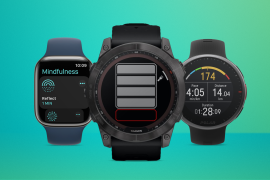Samsung Odyssey G6 OLED review: OLED gaming goes mainstream
Samsung's new OLED starting point impresses where it counts
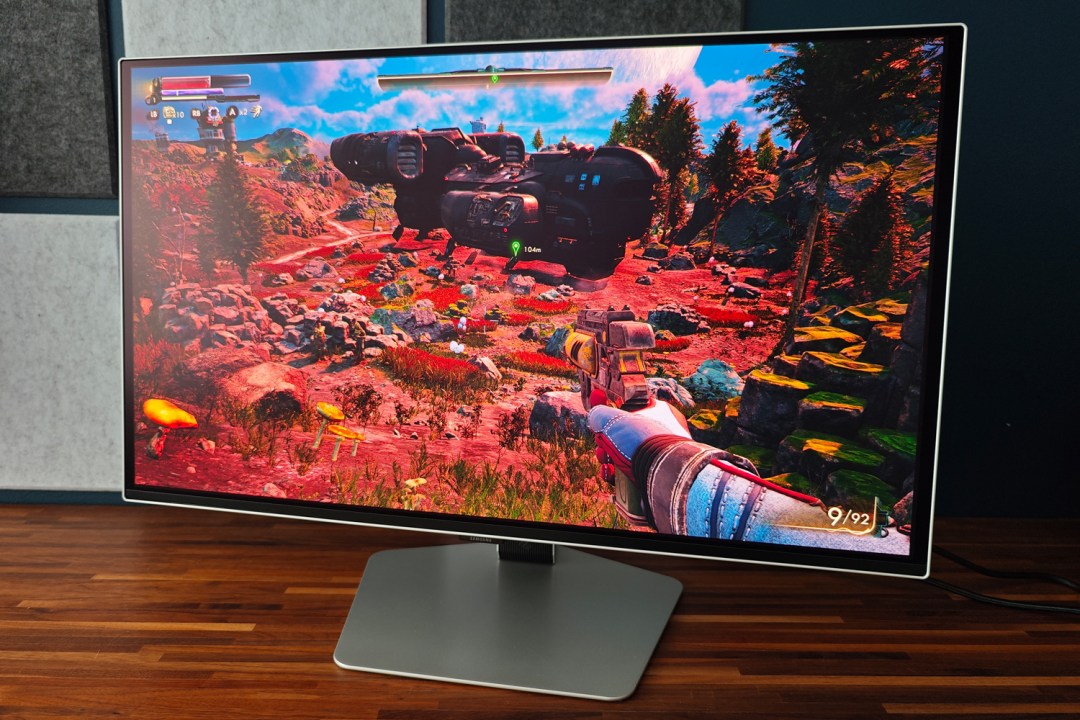
Stuff Verdict
This sensibly priced and sharp-looking OLED is a great gaming all-rounder. The Samsung Odyssey G6 foregoes 4K and streaming smarts, but nails the essentials – including a speedy refresh rate.
Pros
- Outstanding colour and contrast
- Deals with reflections brilliantly
- Premium build and slick styling
Cons
- Brightness could be higher
- Control stick regularly swallows inputs
- Connectivity merely OK
Introduction
‘Entry-level’ doesn’t have to be a dirty word. Not when the gadget in question brings previously unobtainable tech to a more wallet-friendly price point. That’s the latest Samsung Odyssey G6 in a nutshell; not only does it hit the current gaming monitor sweet spot (27in, 1440p resolution and a flat panel), but it makes quantum-dot OLED a realistic alternative to top-tier LCDs.
At $799/£799, the G6 (or G60SD, to give its full name) is a far cry from the overkill ultrawide screens and TV-rivalling sizes that first brought the tech to the PC world. Samsung has been conservative on the features front to make that happen, but hasn’t skimped on styling. And while some rivals are even more affordable, none can match the G6’s esports-grade 360Hz adaptive refresh rate – which even bests its Odyssey G8 bigger brother.
Image quality is the main selling point of any screen. But is that alone enough for the Samsung Odyssey G6 OLED to impress?
How we test gaming hardware
All games consoles and gaming hardware tested on Stuff are put through their paces with days’ worth of play time. We use our years of testing experience to judge areas such as build quality, software experience, battery life and other features. Manufacturers have no visibility on reviews before they appear online, and we never accept payment to feature products.
Find out more about how we test and rate products.
Design & build: slim when you’re winning
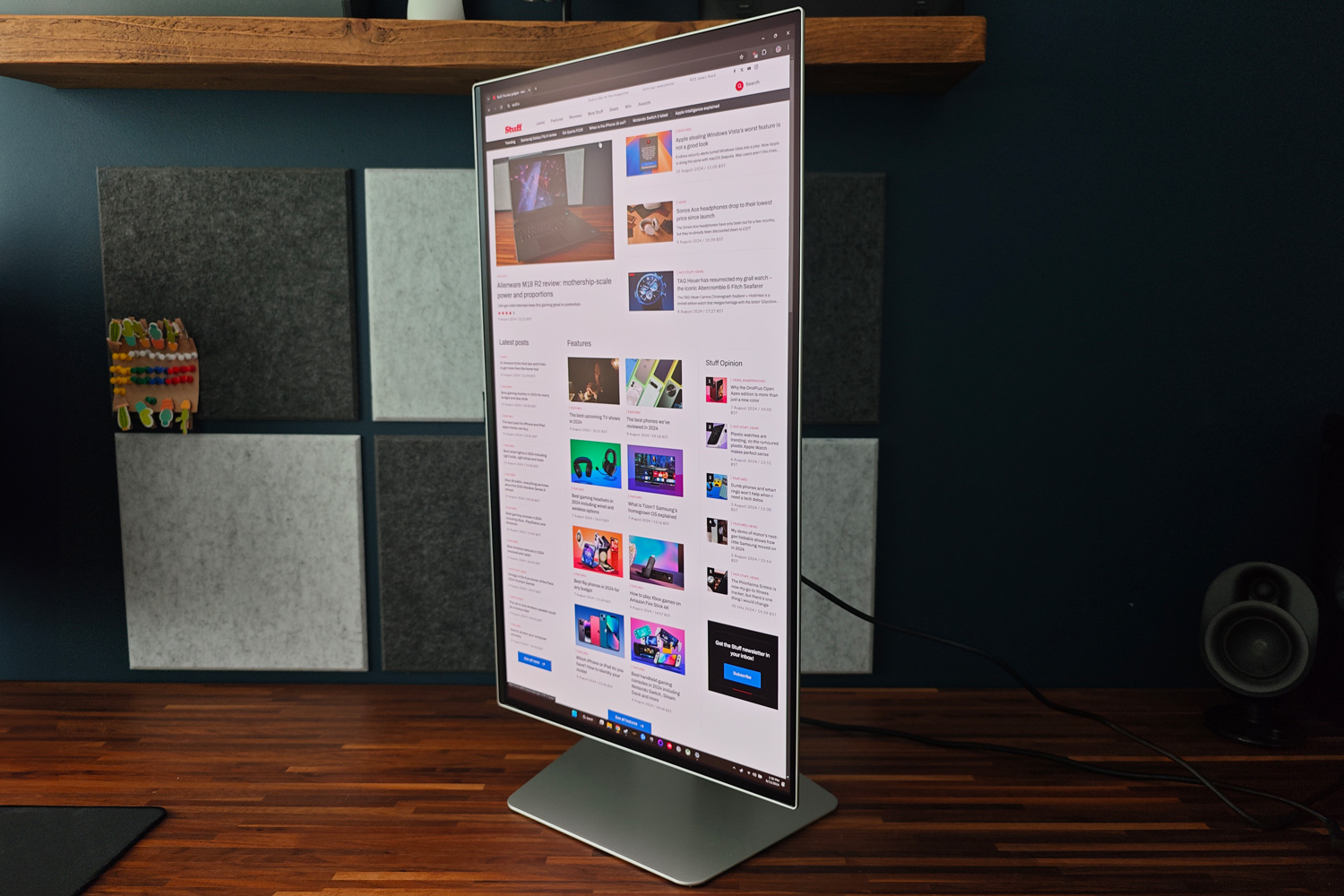
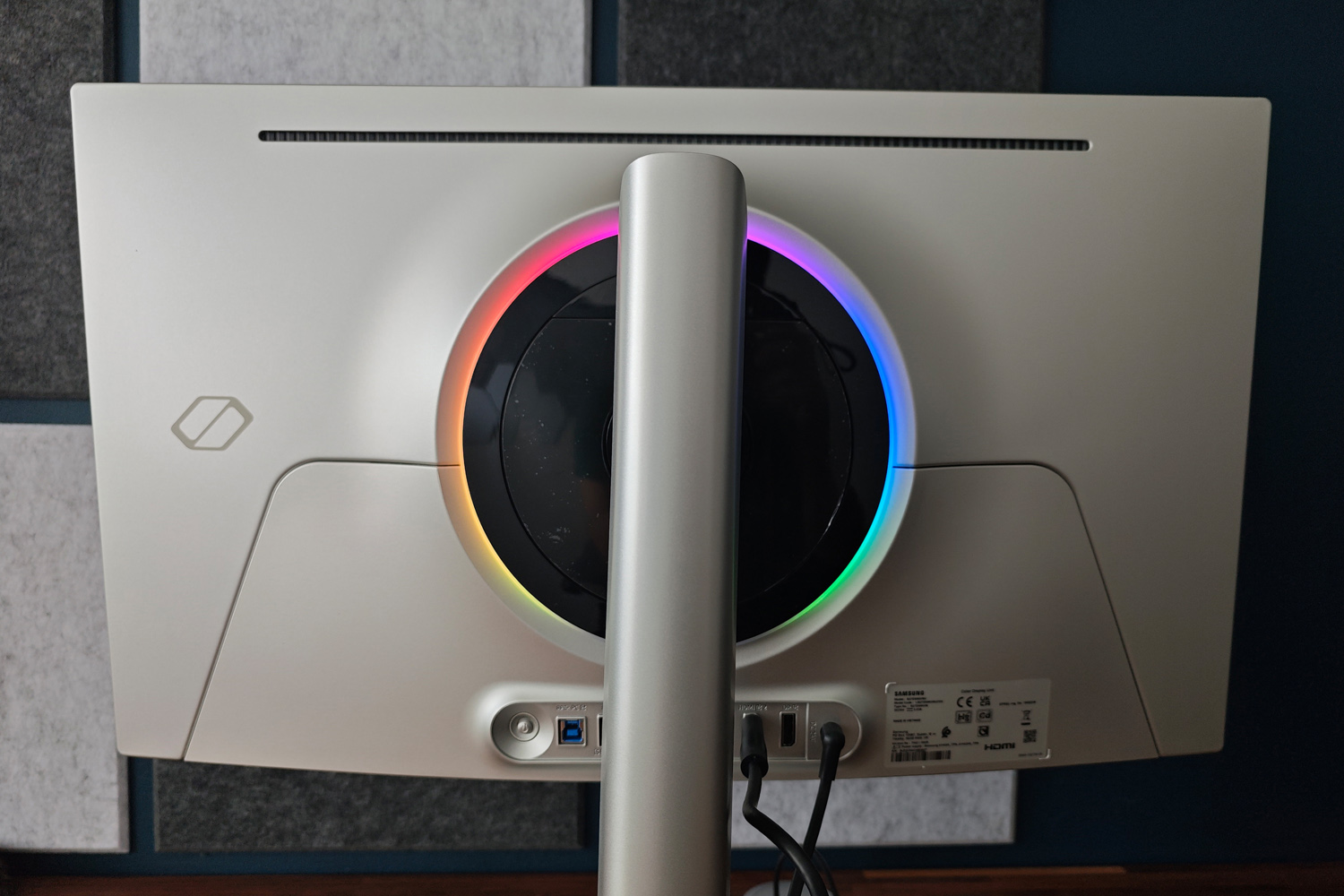
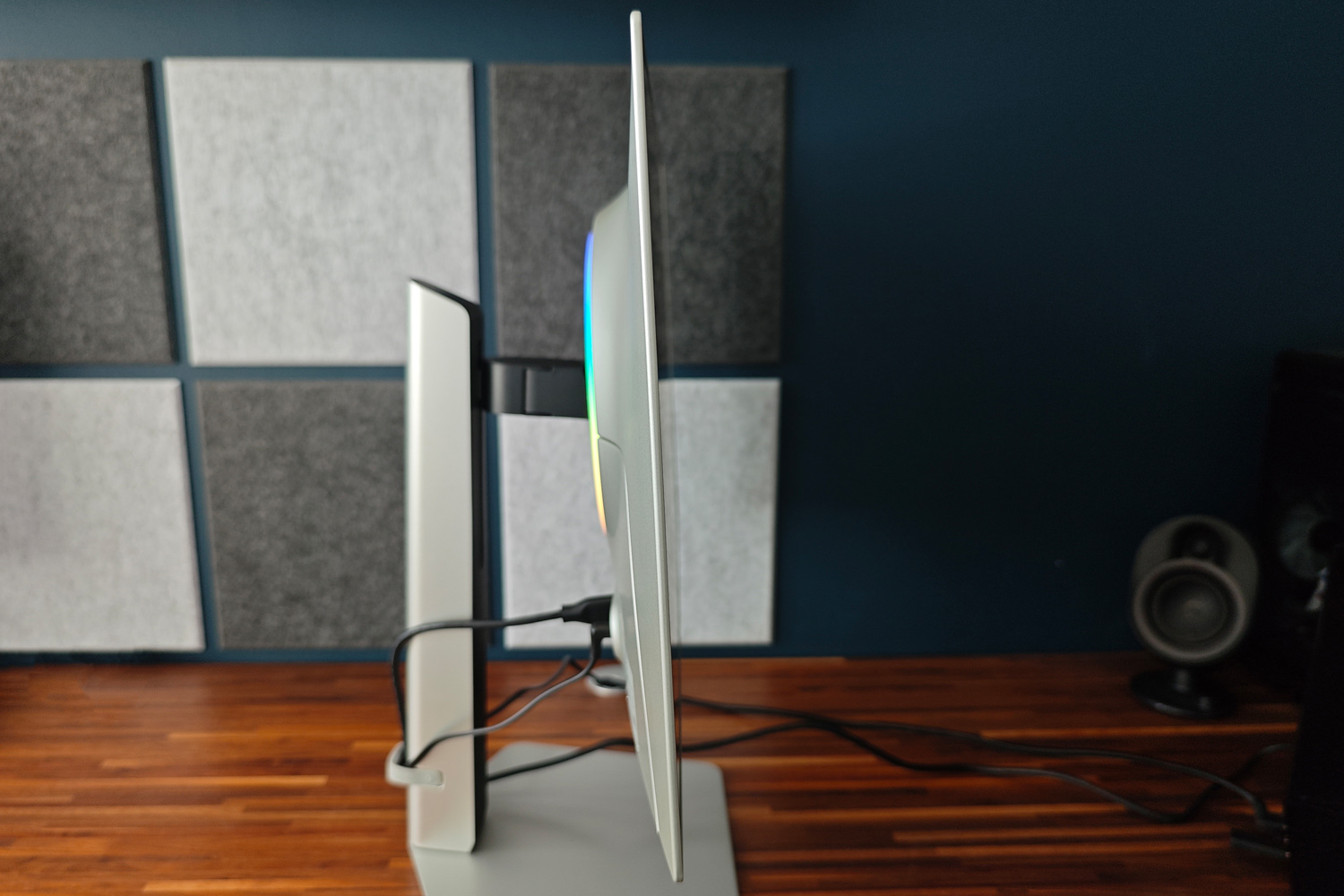
Even before you power it on, the Samsung Odyssey G6 OLED is seriously easy on the eyes. It has the same slim, silver styling as the more expensive Odyssey G8, with a frame that’s impossibly thin at the far edges. The frame is made from plastic but the stand is metal, which helps sell this as a premium product. I’m not 100% convinced the silver trim around the screen edge works, though. It could be a little distracting when watching darker movies or playing dark games that the OLED panel otherwise excels at.
Setup is a breeze, with no tools or screw tightening required. Everything just clips or twists into place. The stand is wonderfully sturdy, refusing to budge an inch unless I lifted the entire thing off my desk, and impressively versatile. You get a generous 12cm of height adjustment, ample tilt and swivel, and full 90-degree rotation for using in portrait orientation. Or you could ditch it for a VESA mount if you’re so inclined.
My only grumble is the basic cable management solution. A detachable rubber clasp at the back of the stand only truly keeps wires from view if you can trail them directly backwards below your desk. It’s a little low, so I could still spot my cables when the screen was in its highest position.
Features & connectivity: simple is best
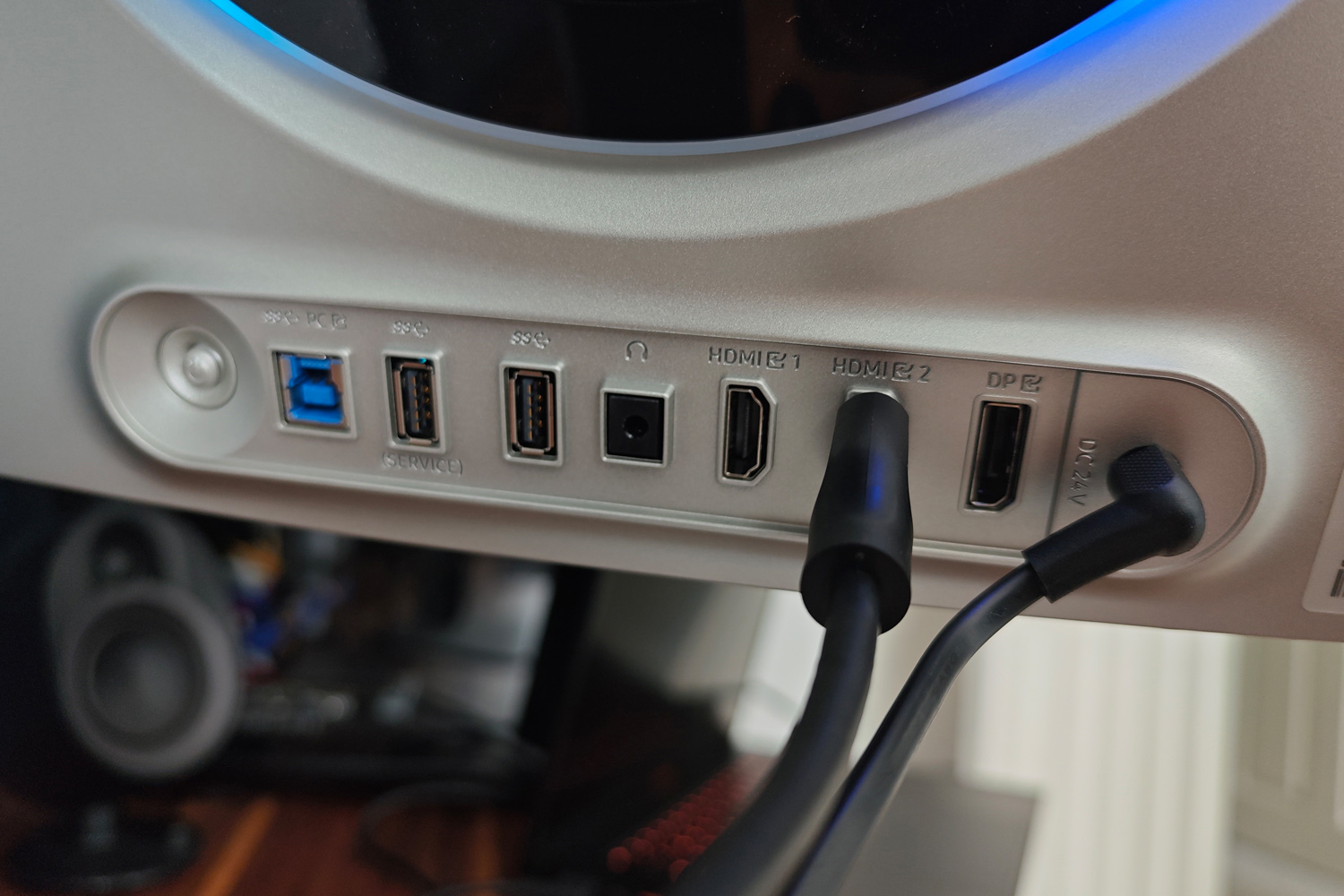
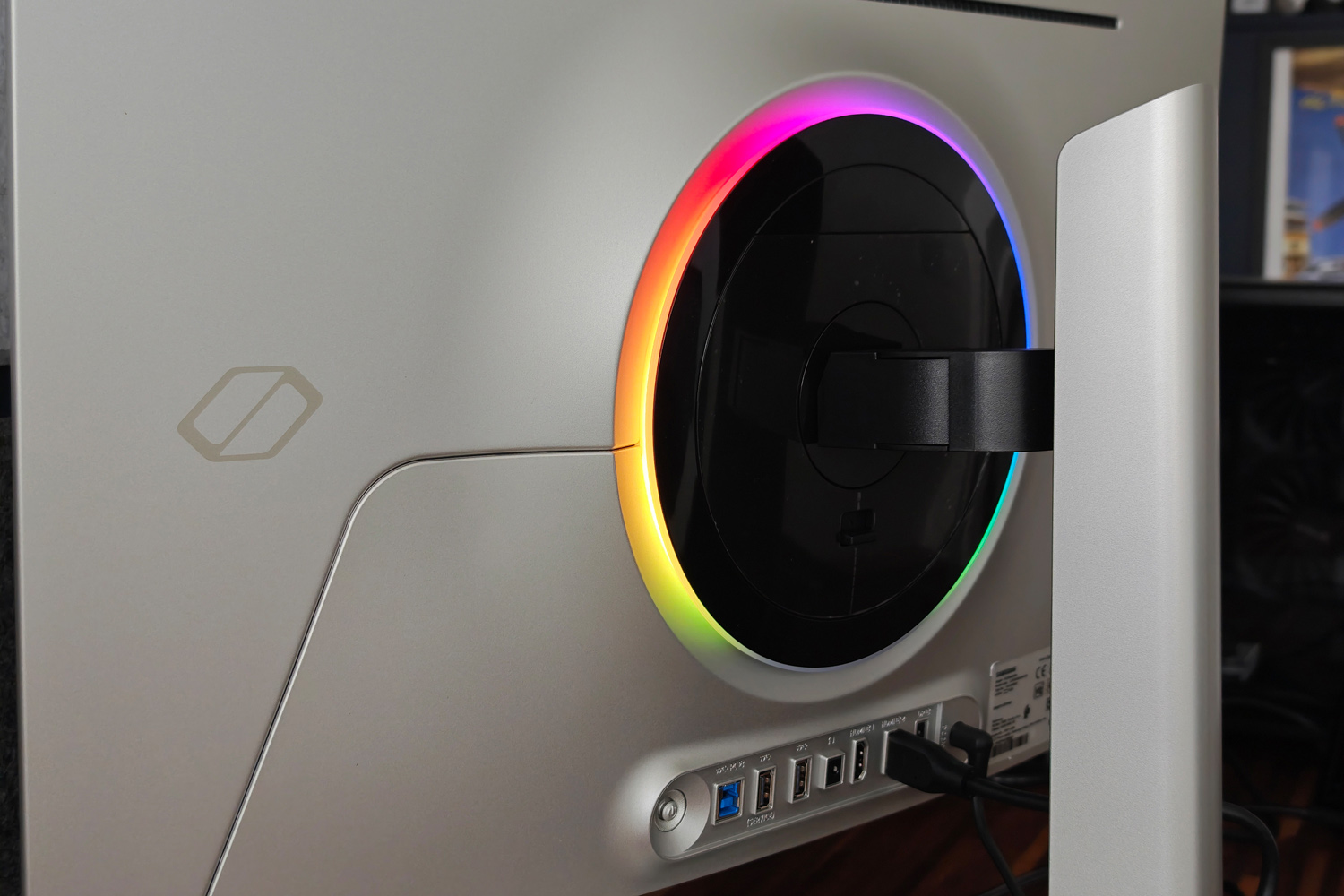
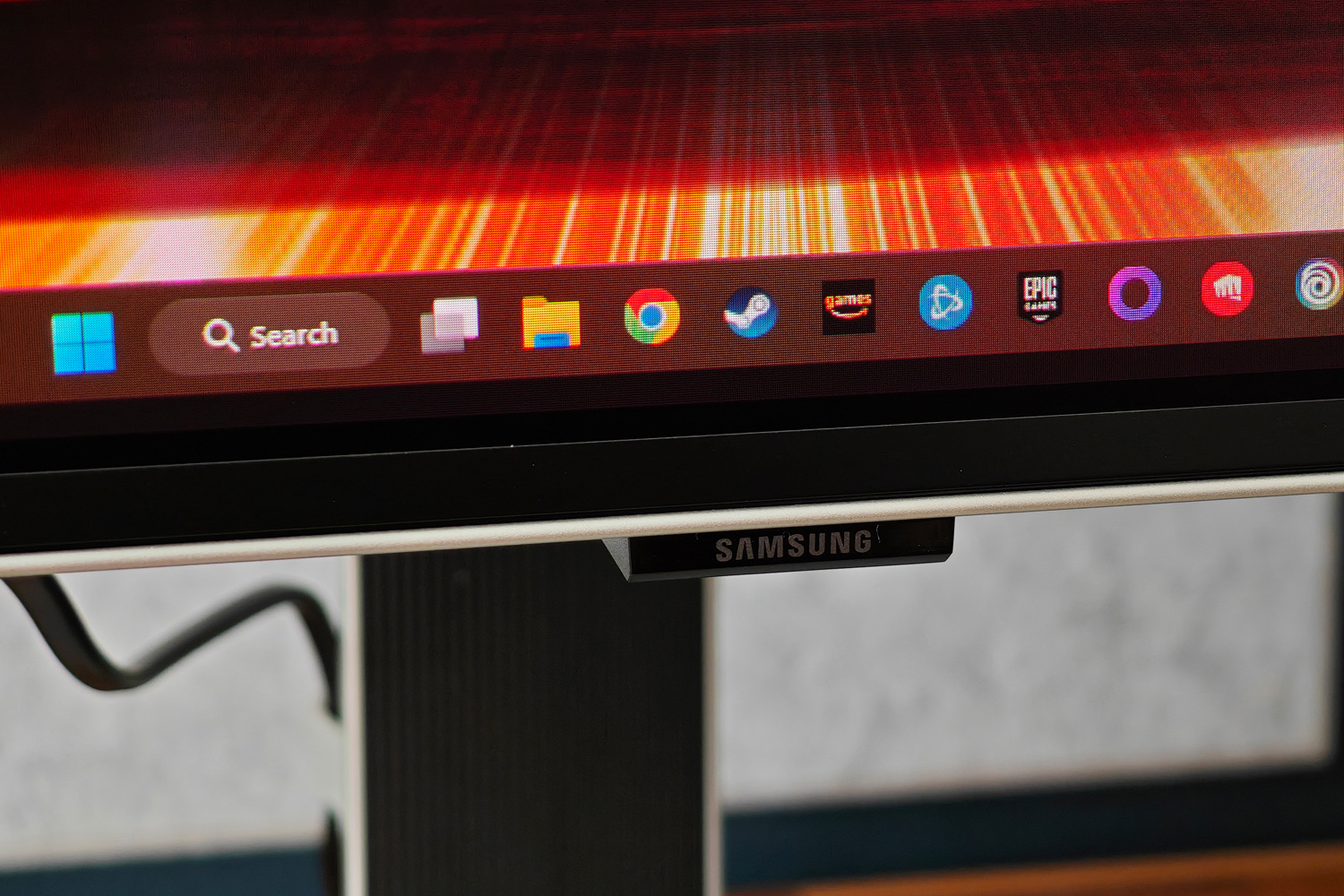
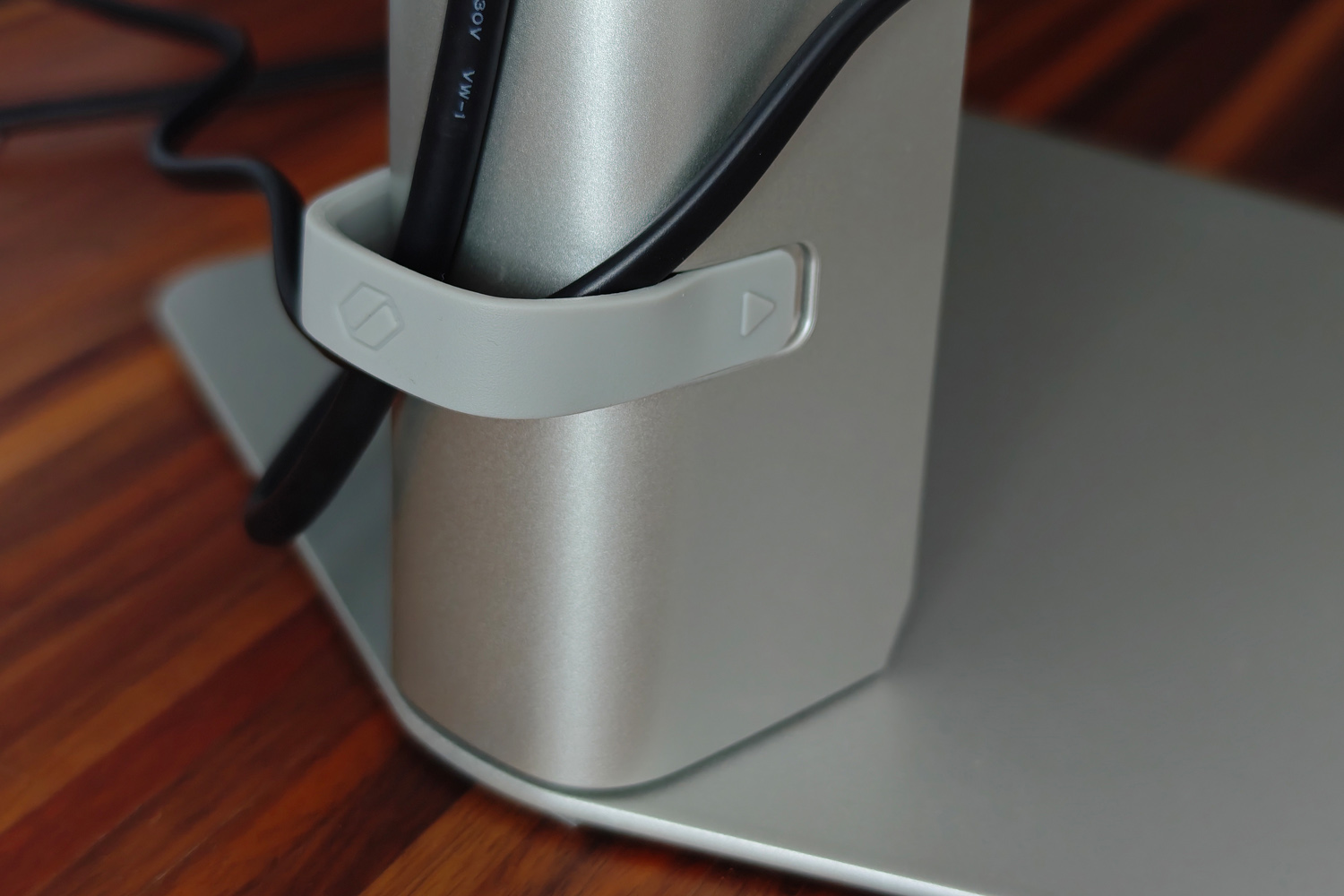
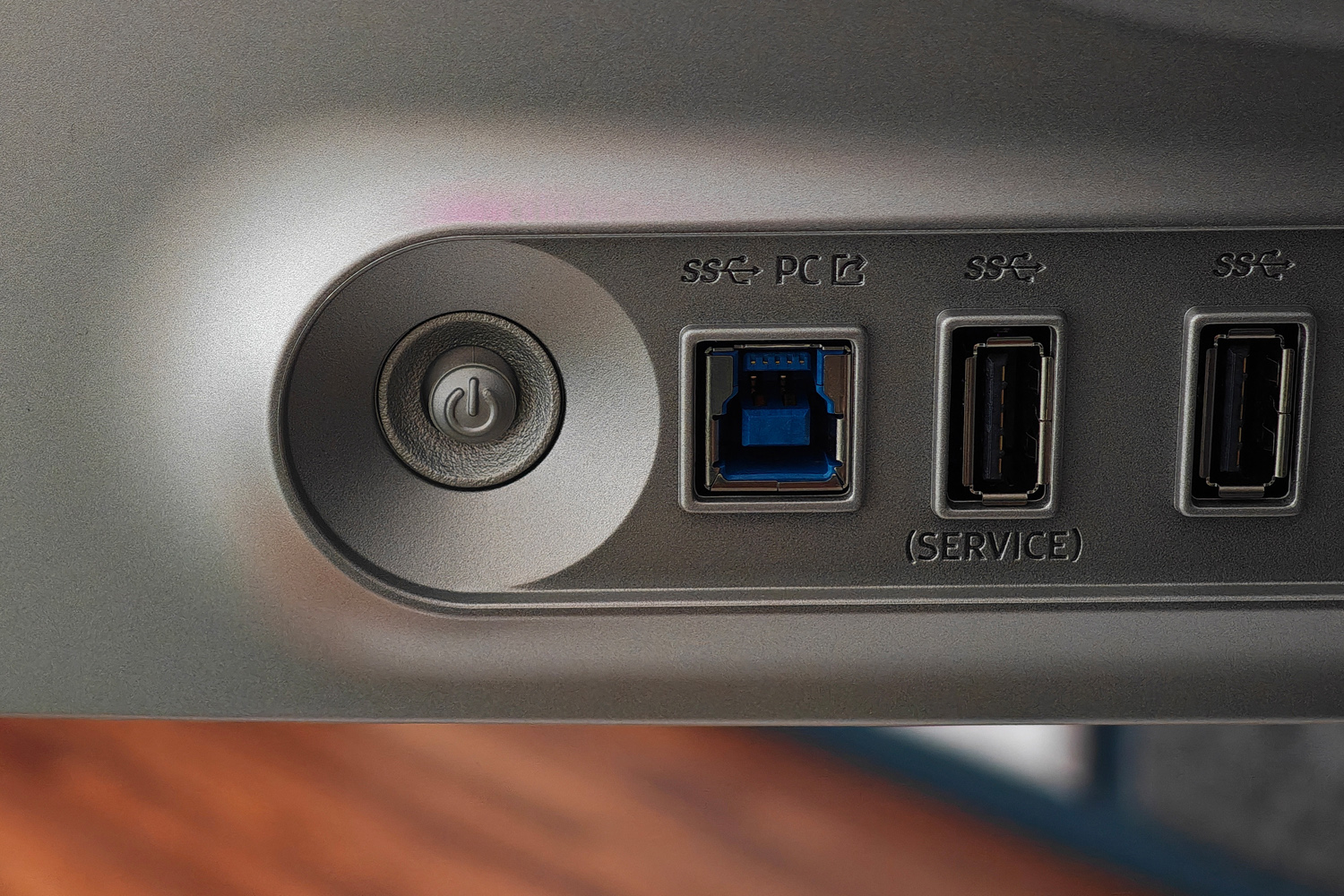
It won’t take long to skim the Odyssey G6’s spec sheet. This monitor is very light on extra features, most likely to keep the cost as low as possible. You don’t even get any built-in speakers here – the volume buttons just control the output to any connected headphones.
Samsung’s Infinity Core lighting does make the cut, adding a ring of colour-changing LEDs at the back of the monitor. There are a few different patterns to pick between, but the lights themselves are actually pretty dim; they barely lit up the wall behind my gaming setup while playing at night.
Connectivity is merely OK, with a single DisplayPort 1.4 and two HDMI ports. One supports eARC for external audio. There’s also a 3.5mm headphone port, an upstream USB connection to your PC, and two USB-As. It’s a shame there’s no USB-C connectivity or passthrough power for hooking up a laptop with one cable, though.
AMD FreeSync Premium Pro is on board to eliminate screen tearing in games, with Nvidia GPU owners also able to get in on the action. VRR support is there for Xbox and PS5 gamers, too.
The one thing I’ve not been able to test is how effective the heat pipe cooling system is at preventing screen burn-in over time. That it’s included at all is impressive, given the screen’s slim dimensions, and on paper should perform better than a passive heat sink. There’s also a whole bunch of behind-the-scenes tweaking going on to prevent lasting panel damage, including pixel refreshing, dimming static elements, and activating a screensaver after ten minutes of no activity.
Even so, Samsung could still stand to be clearer over whether burn-in is covered by the warranty.
Interface: keeping control
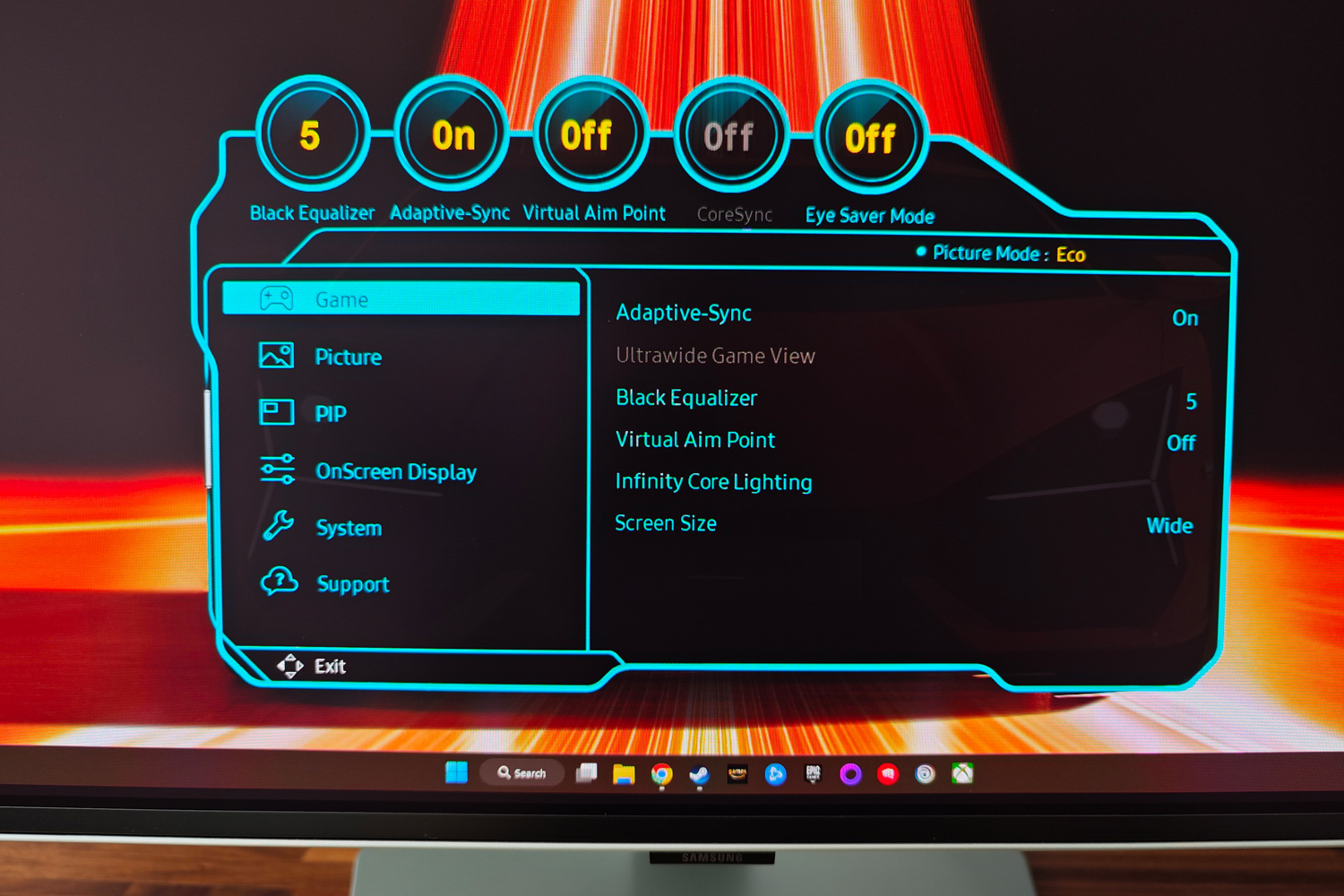
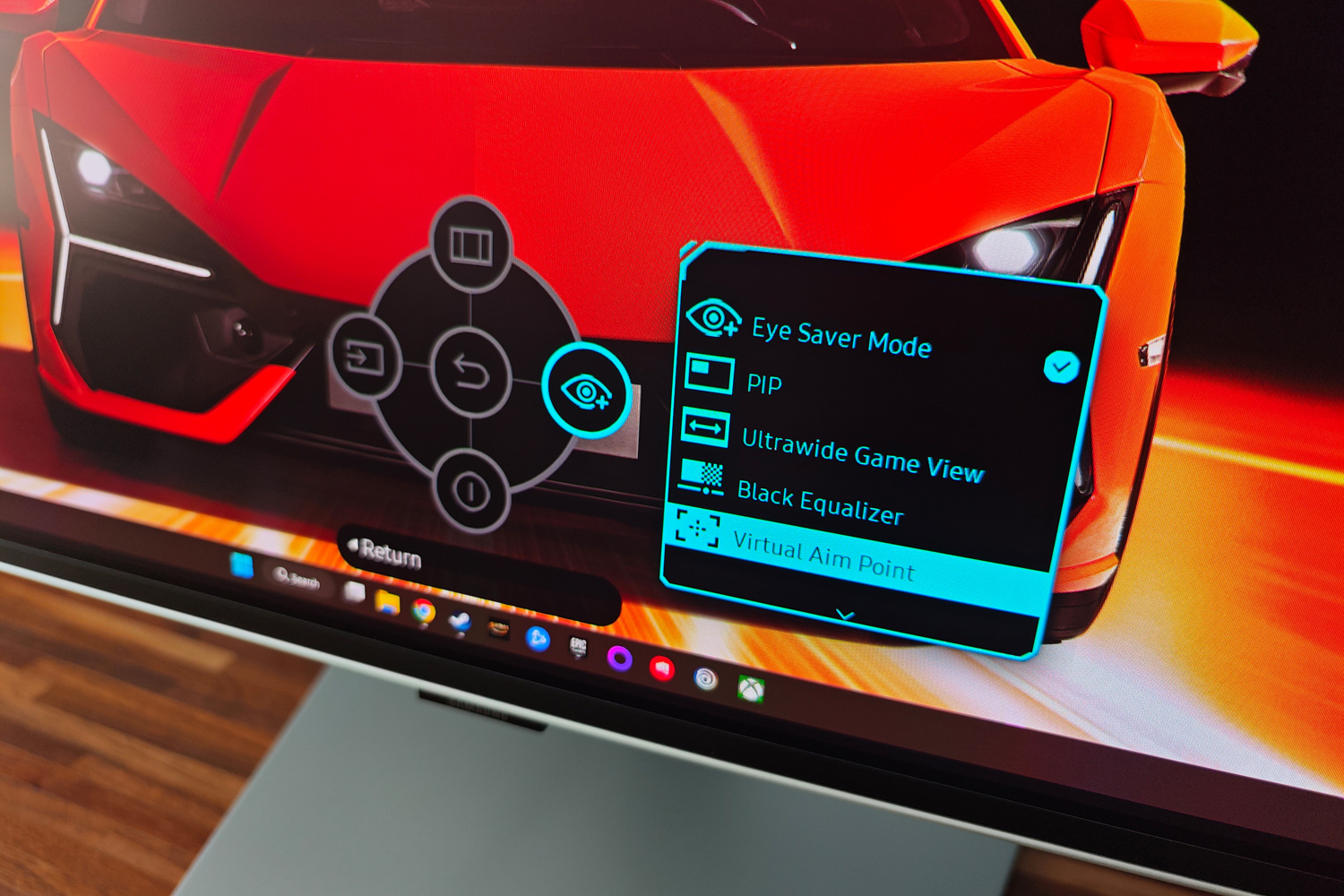
You don’t get a remote control with the Samsung Odyssey G6, so have to rely on the control stick at the back of the monitor. It’s annoying, then, that the UI doesn’t always recognise your inputs, either ignoring them completely or moving in the wrong direction. At least there’s not much reason to fiddle beyond the initial setup.
The menus are sensibly laid out, don’t take over the entire screen (handy when making adjustments) and put a bunch of gamer-specific info at the top that’s easy to check at a glance. You’ve still got to dig into the settings to adjust each one, though. You can assign a single setting to a quick shortcut on the control stick, but only the handful Samsung has deemed worthy.
Extra features are pretty standard fare for gaming monitors, including a virtual crosshair, ultra-wide view mode, and a black equalizer that lightens darker parts of the screen automatically. I genuinely found it useful for Ubisoft’s Xdefiant, as I’m still learning map layouts so don’t know which shady corners campers like to hide in.
It gets the job done, but is nowhere near as flashy as the Tizen-based UI seen on Samsung’s pricier monitors.
Picture quality: a rainbow of colour
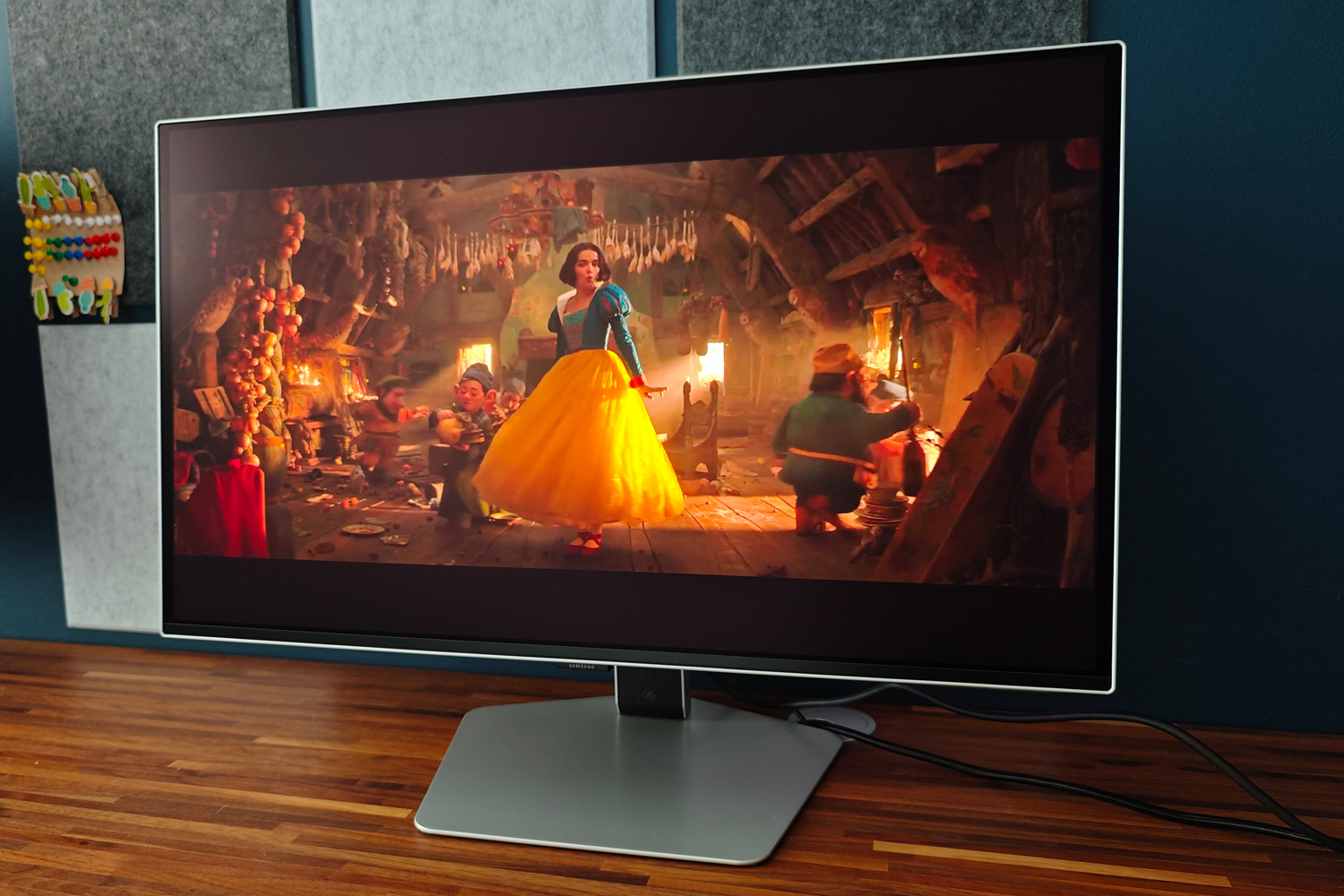
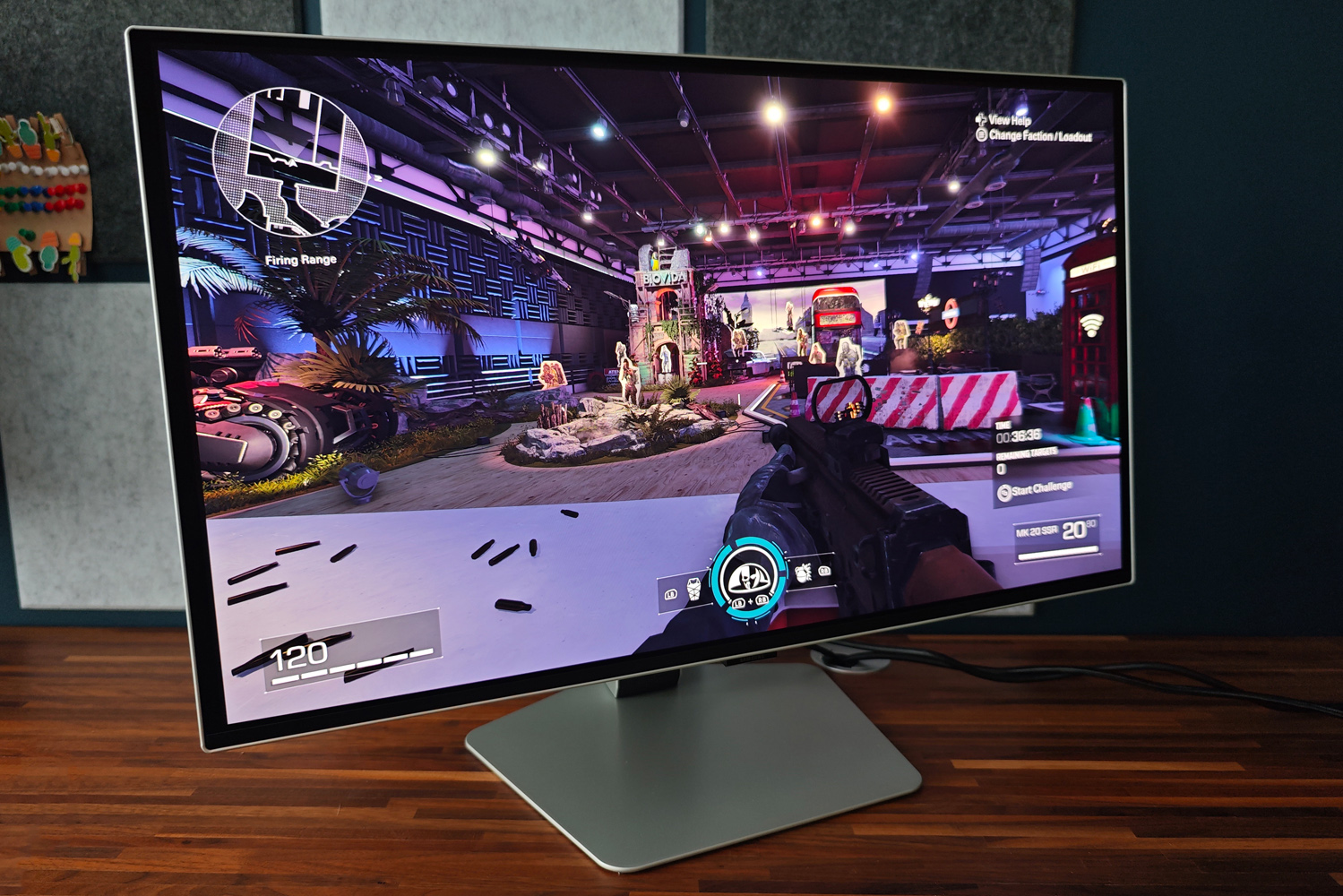
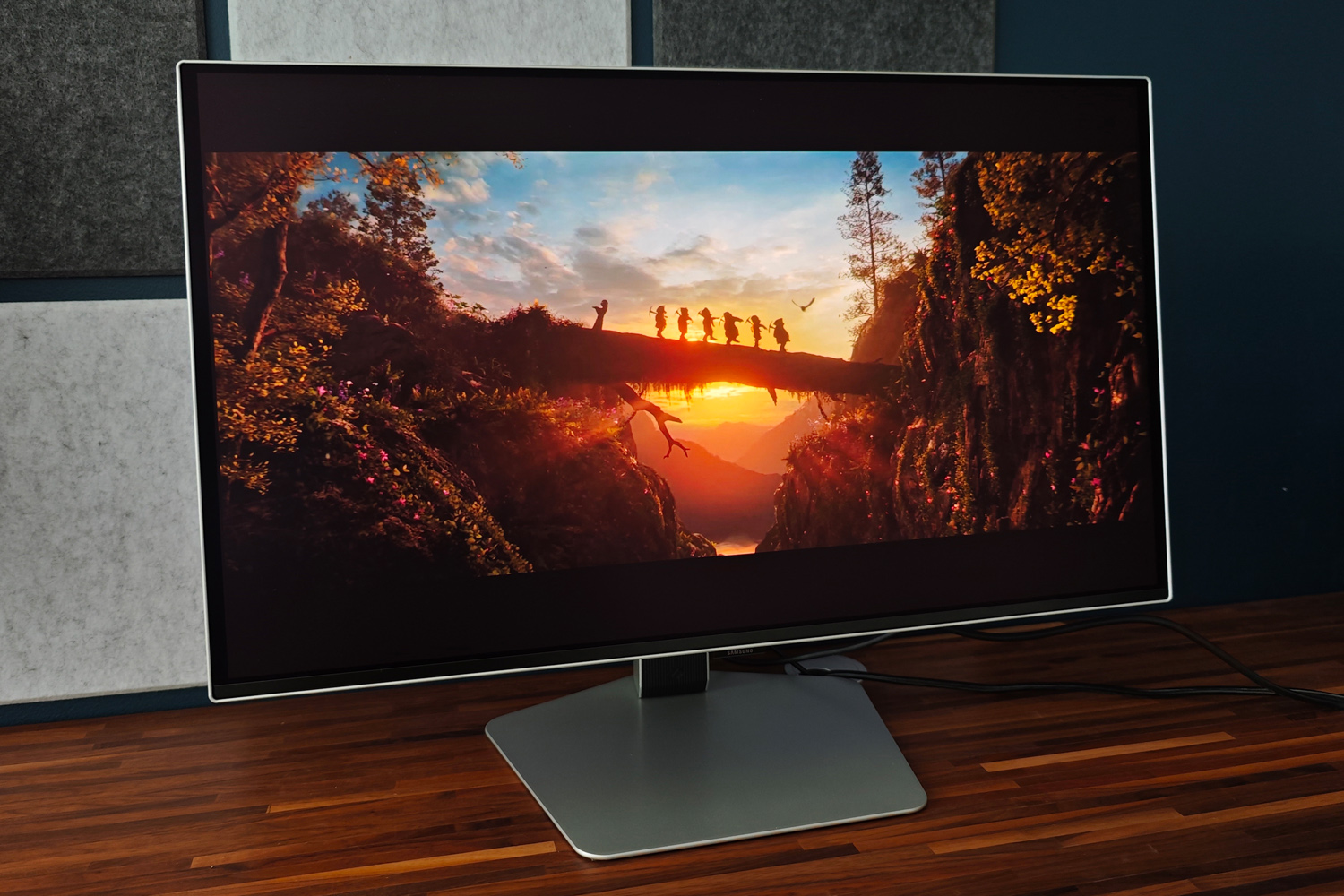
QD-OLED panels have one major advantage over W-OLED ones: colour. Withy no white sub-pixel to dilute them down, the Samsung Odyssey G6 delivers wonderfully impactful hues, giving games and videos properly vibrant pictures when required – but not overdoing it to the point finer colour gradation is lost. Gamut coverage is simply excellent, managing both 99% Adobe RGB and 99% DCI-P3.
Naturally OLEDs don’t have to contend with backlight bloom, and the impeccable contrast means there’s a frankly ridiculous amount of detail on display in darker scenes. Dynamic HDR tone mapping then helps boost highlights on compatible content, with just a minor hit to shading progression. I give it the win over the
LG UltraGear 32GS95UE I tested recently on this front. The Samsung also has more comprehensive picture quality settings, including separate PC and AV modes; the latter has a Movie preset that can boost brightness significantly for video content.
That’s needed if you want to reach for your sunglasses every time you load up Netflix, as the G6 isn’t especially bright in its SDR picture modes. An average of about 200 nits puts it behind most LCD rivals, and cranking up the brightness setting lowers the colour temperature a bit. The anti-reflective screen coating does such a good job that this never caused any visibility issues, even on the brightest of days. It avoids the grainy appearance matte finishes used to have, too.
OLED screens are unrivalled when it comes to motion, and at 360Hz the Odyssey G6 is quite simply outstanding. There’s a level of crispness and clarity here you won’t get from an LCD screen, unless it’s delivering double the refresh rate. It holds up well with low frame rates thanks to the variable refresh tech, and input lag is ridiculously low, too.
The 1440p resolution looks sharp and detailed from a typical desktop distance, but it can’t match a 4K panel for outright clarity. If your graphics card can handle it – and you have the credit limit – a UHD screen is the best way to futureproof your gaming setup.
Samsung Odyssey G6 OLED verdict
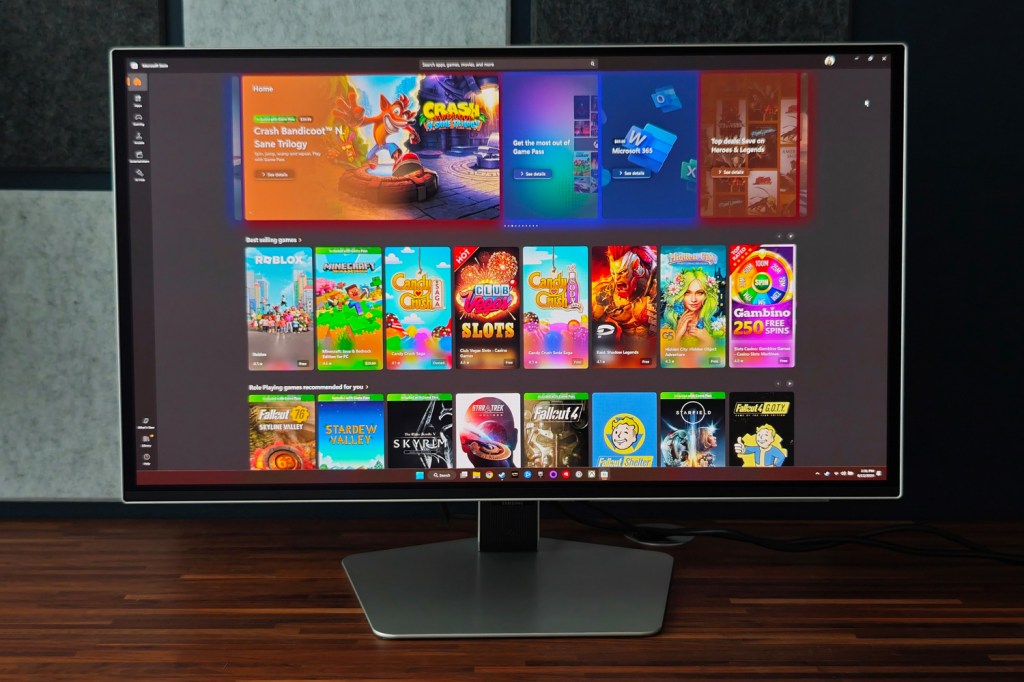
Samsung has definitely taken the no-frills approach for the Odyssey G6 – but if that’s what it takes to make QD-OLED gaming monitors more affordable, I’m all for it. The screen really is the star here, with simply stunning image quality, rapid refresh rate and impeccable response times.
The G6 doesn’t skimp on styling, and even found room in the budget for some RGB lighting. Connectivity is decent rather than class-leading, though, and the onboard controls are disappointingly fiddly. The panel isn’t super bright, either, but the anti-reflective coating makes all the difference during daylight hours.
If you’re after something more multi-purpose, the Odyssey G8 is bigger, has a 4K resolution, and is stuffed with smart TV features. Just be prepared to pay handsomely to get one on your desk.
Stuff Says…
This sensibly priced and sharp-looking OLED is a great gaming all-rounder. The Samsung Odyssey G6 foregoes 4K and streaming smarts, but nails the essentials – including a speedy refresh rate.
Pros
Outstanding colour and contrast
Deals with reflections brilliantly
Premium build and slick styling
Cons
Brightness could be higher
Control stick regularly swallows inputs
Connectivity merely OK
Samsung Odyssey G6 OLED G60SD technical specifications
| Screen size | 27in, 16:9 |
| Resolution | 2560×1440 |
| Refresh rate | 360Hz, FreeSync Premium Pro |
| Response time | 0.03ms |
| Brightness | 275 nits (SDR) / 1300 nits (HDR) |
| HDR | HDR10+ Gaming |
| Connectivity | 2x HDMI 2.1, 1x DisplayPort 1.4, 2x USB-A, 3.5mm headphone out |
| Dimensions | 612x554x264mm, 6.9kg (with stand) 612x354x49mm, 3.8kg (panel only) |


